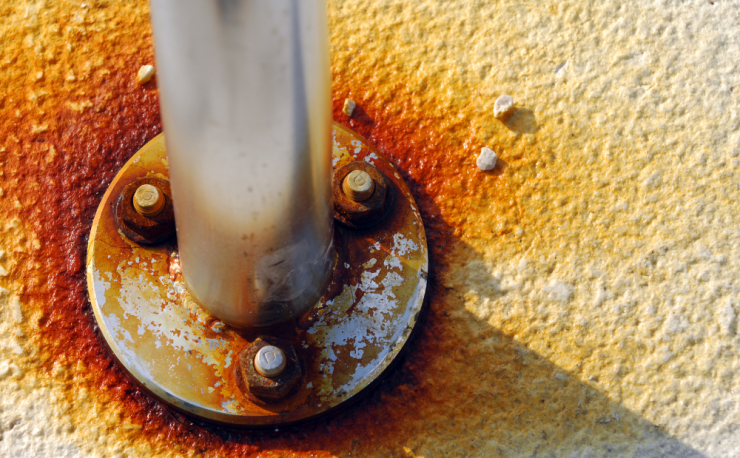
Today we wanted to talk about corrosion, a theme that is often recurring in the questions that come to us on our blog. In fact, the word “stainless” makes us believe that components made of stainless steel are indestructible.
Corrosion: what basic precautions to avoid it?
Many industrial sectors (e.g. food, chemical, petrochmical, construction, transport, etc..) choose stainless steels for components, replacing materials such as carbon steels. This choice is often due to the belief that stainless steels can withstand any environment and any operating conditions. It must be thought, however, that there are different types of stainless steels that can react in different ways depending on the application and conditions. The choice of the right alloy is therefore fundamental. In addition, it is important to follow certain precautions during the processing, welding and installation of the elements, so as to ensure optimal hold over time.
What are the main causes of corrosion?
There are many factors that can trigger a corrosive phenomenon. Let’s see together which:
- concentration of the aggressive agent (most decisive)
- temperature of the aggressive agent (most decisive)
- fluid speed on the walls of the material
- surface finish of the metal.
It becomes essential, therefore, to know these values before choosing the stainless steel to be used for a certain application.
Corrosive phenomena: what are the best performing stainless steels?
Austenitic steels behave better than corrosive phenomena. Above all, from chromium-nickel-molybdenum alloy steels that have a particularly durable passive film. Next we find ferritic steels and, subsequently, martensitics with a lower chromium content.
What are the corrosive phenomena?
There are so many kinds of corrosive phenomena. Here we will tell you about the most recurrent ones in relation to stainless steels.
- Pitting corrosion: the passive layer is damaged locally due to highly activating substances (e.g. chlorides)
- Crevice corrosion: is triggered in areas that are poorly “oxygenated”, with the presence of aggressive substances
- Stress corrosion cracking: when cracks develop due to the simultaneous action of mechanical tension and chemical aggression.
- Intergranular corrosion: thermal alteration (e.g during the welding phase) causes an impoverishment of chromium at the edges of the grains which, in the presence of a corrosive substance, can start the attack.
- Galvanic corrosion: by pairing stainless steel and other less noble materials that, in a given environment, undergo corrosion.
Visit our website and find out how easy it is for businesses to buy our stainless steel products online.
Fasteners, fittings, marine hardware and fixing systems for photovoltaic installations.
Do you read more posts? Click here.